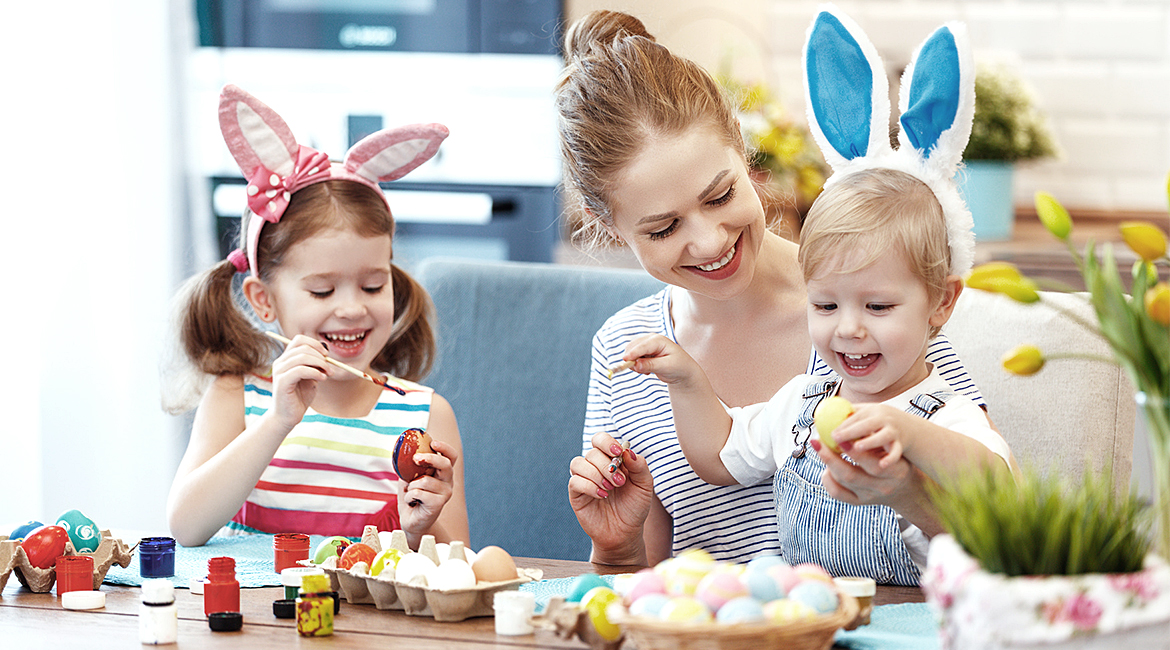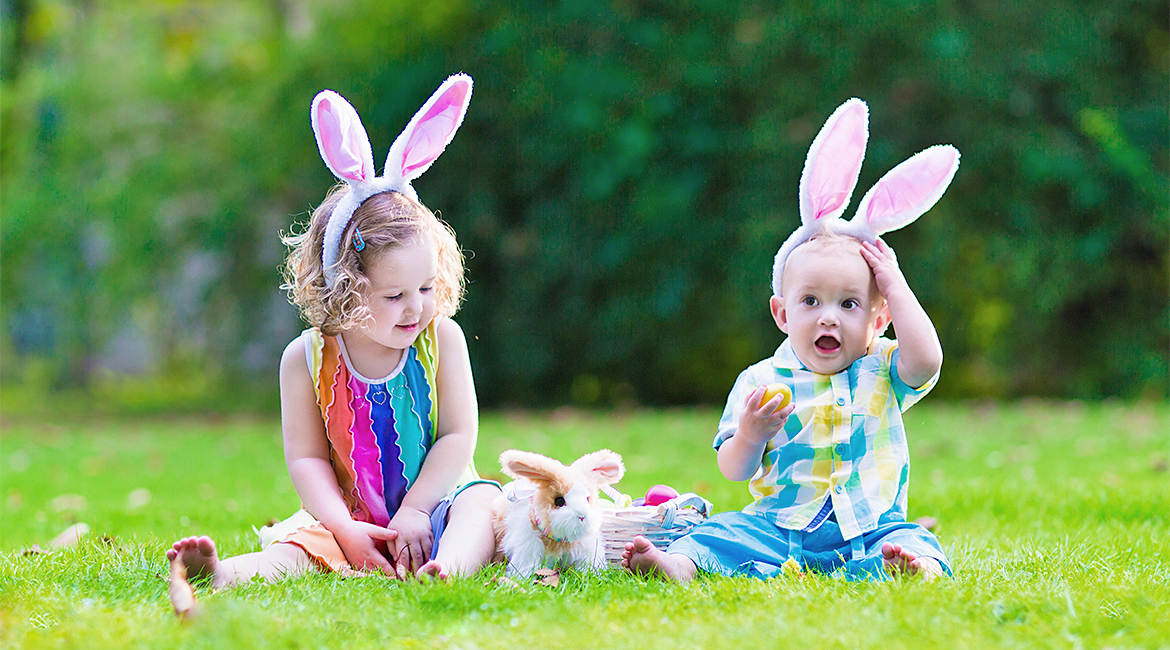As Easter approaches you’re probably on your own hunt for chocolate eggs and candy. With the treats, children probably won’t be questioning too much the sense of this holiday. However, you can take this opportunity to go deeper into the understanding of cultural traditions with your child. If you do, be ready to answer a couple of possible awkward questions.
What is the Easter holiday all about?
There’s a lot of facts associated with Easter. First of all, we find that Easter is one of the most important Christian traditions, related with the celebration of the day Jesus Christ was resurrected.
Decorating Easter eggs first began with the custom of staining eggs red to symbolize the blood of Christ during the crucifixion. The abundance of eggs might also be associated with the fact that they were forbidden, along with milk and meat, during Lent (a 40-day fasting period that precedes Easter). The eggs accumulated during Lent and then would be eaten at Easter.[1]
Along with the celebration of the resurrection, eggs are also known to be a symbol of fertility and rebirth, which might contribute to their link to springtime. It actually seems that every major religion has some kind of version of this celebration with “birth and renewal” as a theme.
Customs evolve over time. German immigrants brought the idea of the Easter bunny. Nowadays, eggs are decorated in different colors and are hidden by the Easter bunny around the house.
Now, how to (or why) explain all this to your child?
Starting the conversation about the meaning of our traditions is tremendously favorable for cognitive and emotional development. Children benefit from reflection on why we do what we do as well as from exposure to the possibility that not everybody shares the same faiths or beliefs.
Easter can also be a great opportunity to introduce your child to the concept of renewal and hope.
You can tell your children that Easter is a celebration of rebirth. If you feel comfortable going into the details, you can explain, like Alyson Schafer suggests, that according with the Christian tradition, “Jesus Christ was left for dead in a cave”, that people were very sad, “but when they rolled away the stone that was blocking the door, he was not inside. So people believe he was brought back to life and returned to heaven”.[2]
If you would rather keep it secular, you can stick with the idea of the celebration of nature’s rebirth after winter.
Understanding the pain and sadness of separation, loss and death, will allow children to really connect with the joy of rebirth. We probably wouldn’t be as happy about spring flowers if they didn’t go away during the winter.
Rebirth is also a reminder that there’s hope even in the darkest moments, that spring always follows winter.
Tips for holiday celebrating
- Be ready to discuss any questions or details your children may want to talk about. Be aware that questions like: “why was Jesus Christ dead in a cave?”, could arise.
- Explain that Easter is celebrated in different ways around the world. In Sweden, instead of an Easter Bunny, “they have an Easter Wizard”, and kids wear witch and wizard costumes. Remember to add that some cultures don’t even have an Easter celebration, “wait what?”
- Look for age-appropriate Easter books and videos you can use as a starting point for sharing the Easter tradition with your children.
- Make Easter baskets for each other! This encourages children to be empathetic and generous.
- Use healthy treats and educational toys for your children’s Easter baskets. Pieces of fruit and small books will all be great options.
- Make a family activity of coloring Easter eggs. Encourage your children to create unique patterns and colors.
- Hide your own colored eggs and treats in your backyard or around your home. You can also look for an Easter egg hunt near you.
- If you decide to hide the eggs yourself avoid places too high or near driveways with traffic. Also, opt for the back yard over front yard if possible.
- If you go to a community Easter egg hunt, remember to check that all of your children’s findings are appropriate for them. Check, for example, candy size for small children and ingredients for kids with allergies etc.
- Finally, but very important, enjoy your family time. Whatever approach you choose to follow, remember this is a time of joy and celebration.[3]
References
[1] Smith, A. 2010. The Early History of Easter
[2] Khoo, I. 2017. The Huffington Post Canada: How To Explain Easter To Your Kids If You’re Not Religious
[3] Collings, A. 2007. Stories behind the traditions and songs of Easter
About the Author:
Laura Pacheco Bennett is a researcher and psychologist who is passionate about human development. She has worked in social projects empowering vulnerable communities and she especially loves working with children. Her experience includes over five years conducting evidence-based psychotherapy and the direction of a dependency treatment center where different approaches were tested to achieve a higher remission rate. Her background includes designing, implementing and assessing programs to develop psychological skills like assertive communication, coping with grief and loss, social skills, self-esteem, child development, effective learning, and resilience.




